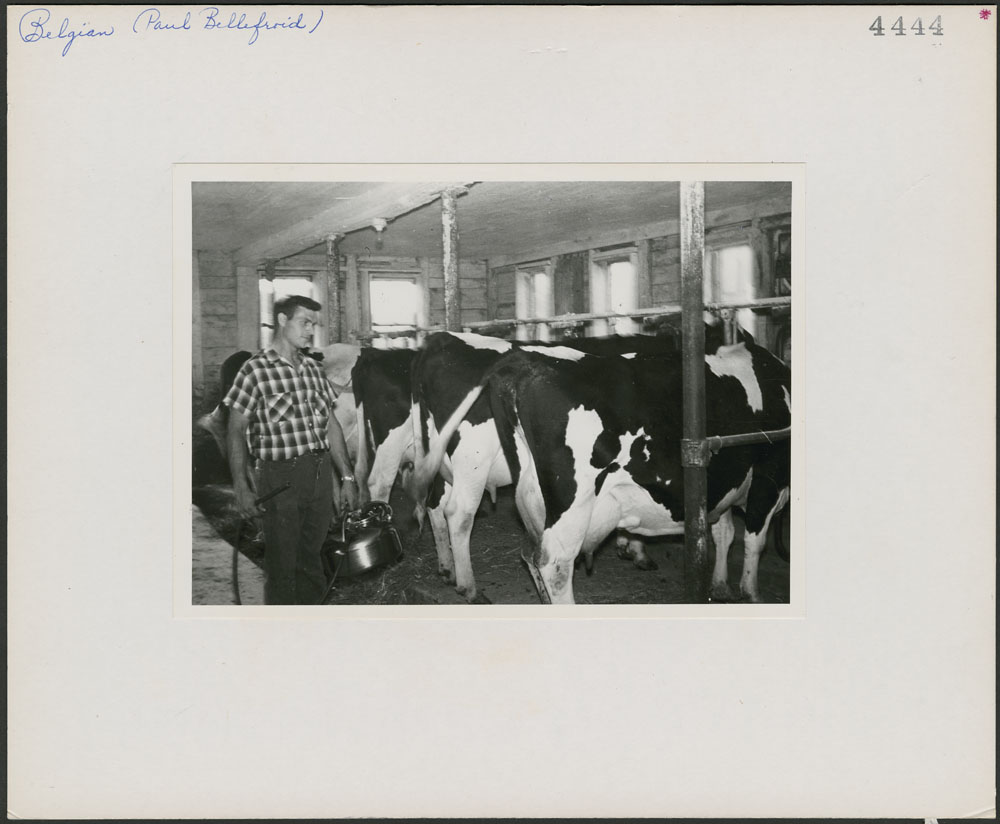Article
Cuttlefish
Cuttlefish, decapod ("ten-footed") mollusc of class Cephalopoda. Cuttlefish comprise over 100 species in genera Sepia and Spirula.

Enter your search term
Signing up enhances your TCE experience with the ability to save items to your personal reading list, and access the interactive map.
Create AccountArticle
Cuttlefish, decapod ("ten-footed") mollusc of class Cephalopoda. Cuttlefish comprise over 100 species in genera Sepia and Spirula.
"https://d3d0lqu00lnqvz.cloudfront.net/media/media/abd792d0-0ce9-4b63-a09f-fd291257017a.jpg" // resources/views/front/categories/view.blade.phphttps://d3d0lqu00lnqvz.cloudfront.net/media/media/abd792d0-0ce9-4b63-a09f-fd291257017a.jpg

Article
Cypress is the common name for evergreen conifers of genus Cupressus of the cypress family (Cupressaceae). At least 12 species are recognized worldwide occurring in warm, northern temperate regions.
"https://www.thecanadianencyclopedia.ca/images/tce_placeholder.jpg?v=e9dca980c9bdb3aa11e832e7ea94f5d9" // resources/views/front/categories/view.blade.phphttps://www.thecanadianencyclopedia.ca/images/tce_placeholder.jpg?v=e9dca980c9bdb3aa11e832e7ea94f5d9

Article
The CYPRESS HILLS and Swift Current Plateaux of southwestern Saskatchewan preserve Eocene, Oligocene, and Miocene FOSSILS 42 million to 16 million years old, in the Cypress Hills Formation. Faunas of at least 14 different ages are represented there.
"https://www.thecanadianencyclopedia.ca/images/tce_placeholder.jpg?v=e9dca980c9bdb3aa11e832e7ea94f5d9" // resources/views/front/categories/view.blade.phphttps://www.thecanadianencyclopedia.ca/images/tce_placeholder.jpg?v=e9dca980c9bdb3aa11e832e7ea94f5d9

Article
About 60% of the milk produced is processed into butter, cheese and skim milk powder; the remainder is consumed in liquid form.
"https://d3d0lqu00lnqvz.cloudfront.net/media/media/3ca5cb01-a6f7-4e0f-9563-7c0064380a4f.jpg" // resources/views/front/categories/view.blade.phphttps://d3d0lqu00lnqvz.cloudfront.net/media/media/3ca5cb01-a6f7-4e0f-9563-7c0064380a4f.jpg

Article
Canada's dairy-products industry is made up of companies that process raw milk and cream.
"https://www.thecanadianencyclopedia.ca/images/tce_placeholder.jpg?v=e9dca980c9bdb3aa11e832e7ea94f5d9" // resources/views/front/categories/view.blade.phphttps://www.thecanadianencyclopedia.ca/images/tce_placeholder.jpg?v=e9dca980c9bdb3aa11e832e7ea94f5d9

Article
A dam is a structure built across a waterway to control or stop the flow of water. This is called impounding the flow of water. Dams can be built by animals, such as beavers, or constructed by humans. In some cases, they are even formed by natural geological forces.
"https://d3d0lqu00lnqvz.cloudfront.net/media/new_article_images/Dam/Dam.jpg" // resources/views/front/categories/view.blade.phphttps://d3d0lqu00lnqvz.cloudfront.net/media/new_article_images/Dam/Dam.jpg

Article
Damselfly, thin-bodied, carnivorous insect with 2 pairs of long, membranous, narrow-based wings.
"https://www.thecanadianencyclopedia.ca/images/tce_placeholder.jpg?v=e9dca980c9bdb3aa11e832e7ea94f5d9" // resources/views/front/categories/view.blade.phphttps://www.thecanadianencyclopedia.ca/images/tce_placeholder.jpg?v=e9dca980c9bdb3aa11e832e7ea94f5d9

Article
Dandelion [Fr, dent-de-lion, "lion's tooth"], perennial, herbaceous plant of family Compositae or Asteraceae.
"https://www.thecanadianencyclopedia.ca/images/tce_placeholder.jpg?v=e9dca980c9bdb3aa11e832e7ea94f5d9" // resources/views/front/categories/view.blade.phphttps://www.thecanadianencyclopedia.ca/images/tce_placeholder.jpg?v=e9dca980c9bdb3aa11e832e7ea94f5d9

Article
Deer (Cervidae) is a family of antlered, hoofed ruminants of the order Artiodactyla containing about 40 species worldwide.
"https://d3d0lqu00lnqvz.cloudfront.net/media/media/1da3cb55-6cdb-47c4-8808-c0f6afb0b5ad.jpg" // resources/views/front/categories/view.blade.phphttps://d3d0lqu00lnqvz.cloudfront.net/media/media/1da3cb55-6cdb-47c4-8808-c0f6afb0b5ad.jpg

Article
Deer Mouse (Peromyscus maniculatus), typical mouse with moderately long tail, large ears, prominent eyes and pointed nose well supplied with tactile hairs.
"https://d3d0lqu00lnqvz.cloudfront.net/0dde0bcc-c3bc-4022-b10b-d5be1e1d83ab.jpg" // resources/views/front/categories/view.blade.phphttps://d3d0lqu00lnqvz.cloudfront.net/0dde0bcc-c3bc-4022-b10b-d5be1e1d83ab.jpg

Article
Agriculture, Department of Originally the Bureau of Agriculture of the pre-Confederation Province of Canada, and now called the Department of Agriculture and Agri-Food, the department was established by an Act of Parliament in 1868 to concentrate on the urgent need of the time to control livestock diseases and prevent their entry into Canada. The department is responsible for federal policies relating to agriculture and food, including grading and inspection, seed certification, regulations on pesticides and...
"https://www.thecanadianencyclopedia.ca/images/tce_placeholder.jpg?v=e9dca980c9bdb3aa11e832e7ea94f5d9" // resources/views/front/categories/view.blade.phphttps://www.thecanadianencyclopedia.ca/images/tce_placeholder.jpg?v=e9dca980c9bdb3aa11e832e7ea94f5d9

Article
The Department of Natural Resources was established in 1993, replacing Energy, Mines and Resources as a federal agency. Some of the department's components have long histories. The Department of Mines, created in 1907, was reorganized as the Department of Mines and Resources in 1936.
"https://www.thecanadianencyclopedia.ca/images/tce_placeholder.jpg?v=e9dca980c9bdb3aa11e832e7ea94f5d9" // resources/views/front/categories/view.blade.phphttps://www.thecanadianencyclopedia.ca/images/tce_placeholder.jpg?v=e9dca980c9bdb3aa11e832e7ea94f5d9

Article
FOSSIL bones were first discovered in 1978 in the rocks formed in the now vanished Haughton Lake.
"https://www.thecanadianencyclopedia.ca/images/tce_placeholder.jpg?v=e9dca980c9bdb3aa11e832e7ea94f5d9" // resources/views/front/categories/view.blade.phphttps://www.thecanadianencyclopedia.ca/images/tce_placeholder.jpg?v=e9dca980c9bdb3aa11e832e7ea94f5d9

Article
Gem-quality diamonds crystallize as octahedrons (8 faces), trisoctahedrons (24 faces), hexoctahedrons (48 faces) or a combination of these. Diamond owes its supreme standing among all the gemstones to 4 specific attributes.
"https://d3d0lqu00lnqvz.cloudfront.net/media/media/1c5e002b-c29d-45d2-a47a-a0628acf2581.jpg" // resources/views/front/categories/view.blade.phphttps://d3d0lqu00lnqvz.cloudfront.net/media/media/1c5e002b-c29d-45d2-a47a-a0628acf2581.jpg

Article
Dinosaurs were a group of animals that dominated the land environments of every continent. They lived from the late Triassic period to the end of the Cretaceous period (225 to 65 million years ago). However, birds are the direct descendants of dinosaurs, meaning dinosaurs are still common today. Paleontologists have found at least 88 different species of dinosaurs in Canada (see also Dinosaurs Found in Canada). The primary site of these fossils is Dinosaur Provincial Park, Alberta. Well-known dinosaurs first named from Canadian specimens include Albertosaurus, Centrosaurus, Corythosaurus, Dromaeosaurus,Gorgosaurus, Lambeosaurus, Pachyrhinosaurus, Parasaurolophu sand Styracosaurus.
"https://d3d0lqu00lnqvz.cloudfront.net/media/new_article_images/Dinosaurs/Albertosaurus.jpg" // resources/views/front/categories/view.blade.phphttps://d3d0lqu00lnqvz.cloudfront.net/media/new_article_images/Dinosaurs/Albertosaurus.jpg
